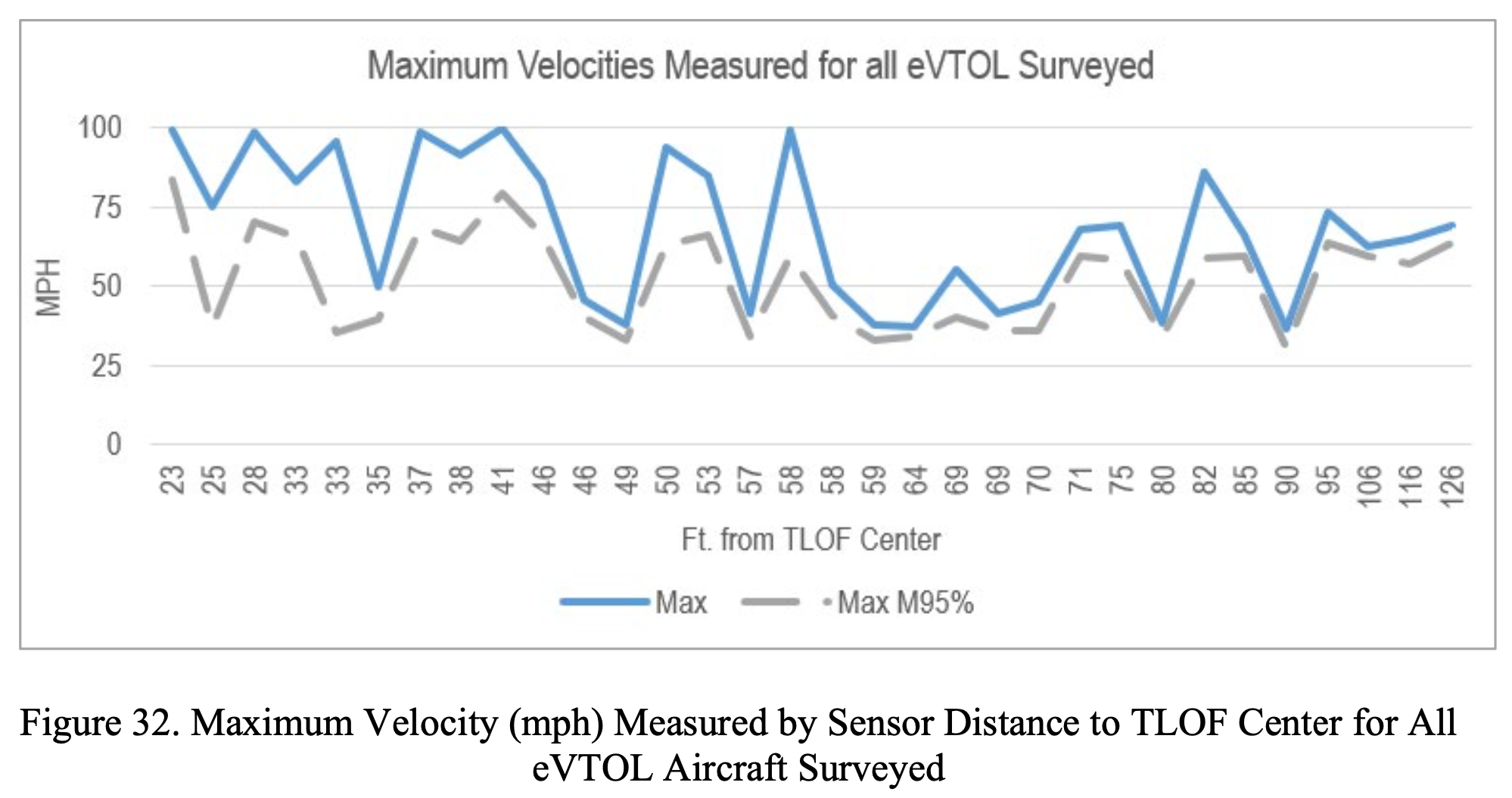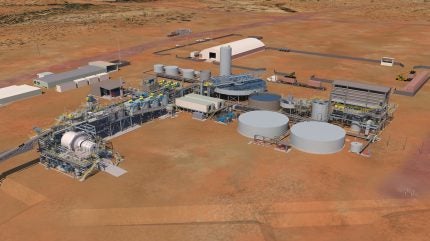
Sign up for daily news updates from CleanTechnica on email. Or follow us on Google News!
Over the past few years tens of billions of dollars, enormous numbers of hours of aerospace engineers’ precious time, and countless articles have been wasted on the Jetsons fantasy of quiet, electric, folding aircraft taking off and descending vertically amidst the towers and homes of our cities. Now the US Federal Aviation Administration (FAA) has given the whimsy another blast of the cold, biting wind of reality.
EVTOLs have incredibly high velocity downwash and outwash from their rotors, far above permitted safety levels.
Rotorcraft operations generate powerful airflows that pose significant safety and environmental challenges, often categorized as downwash and outwash. Downwash refers to the intense column of air pushed directly downward by the rotor blades, creating extreme velocities capable of dislodging debris, damaging vegetation, and posing risks to nearby personnel or infrastructure. Outwash, on the other hand, is the horizontal airflow radiating outward after the downwash strikes the ground, potentially impacting areas far beyond the landing zone. Both phenomena are critical considerations in designing heliports and vertiports, especially in urban or sensitive environments.
The velocity of a typical helicopter’s downwash can reach more than 60 to 90 meters per second (135 to 200 miles per hour) directly beneath the rotor, depending on the size and weight of the aircraft. This intense airflow diminishes as it disperses, but even outwash, the horizontal component radiating from the ground, can maintain velocities of 10 to 20 meters per second (22 to 45 miles per hour) dozens of meters from the landing zone. Safe operational velocities vary by context, but generally, airflow below 10 meters per second (22 miles per hour) is considered manageable for personnel and structures, while velocities exceeding this threshold can pose risks, such as dislodging loose debris or destabilizing lightweight equipment.
Helicopter pilots have to be very careful with their flight path anywhere near the ground to avoid causing mayhem. While there are videos of a US National Guard helicopter blowing relief goods and tents all over the place and light planes being flipped over by it, this video of a Russian MI-35 helicopter destroying a viewing stand and bunting with people in it with a too low flyby should provide some idea of what’s going on.
Downwash and outwash are carefully monitored, measured, and trained for, helicopters are designed and tested to avoid dangerous velocities, and heliports are carefully designed to avoid issues with things blowing off of them. That’s part of the reason why there are so few heliports in cities. Ground crew for heliports have to be very careful as well, maintaining safe distances so that outwash doesn’t stagger them.
Of course, that’s with traditional helicopters. The origami EVTOL crowd, however, are an entirely different beast. To that end, the FAA, as part of its time-wasting certification efforts on this particular aerospace dead end, tested three prototypes from EVTOL startups for their downwash and outwash velocities. The report, Electric Vertical Takeoff and Landing (eVTOL) Downwash and Outwash Surveys, was published on December 30th, 2024. A series of pre-established maneuvers — 3-ft and 10-ft hovers and 10-ft departures and arrivals — were carried out by the pilots remotely operating the EVTOLs. A ground-level array and a vertical array of ultrasonic three-dimensional anemometers — wind velocity measurement devices — recorded the speeds of the downwash and outwash.
The FAA also attempted to do computer simulations of the vortices and flows of air for the three EVTOLs. They ran into challenges because of the number of rotors on the aircraft in close proximity and the degree of interactions between vortices and flows of adjacent rotors. They ran out of available GPU memory, which had a limitation of 4.5 million particles, inadequate for the complexity of EVTOL flows. Basically, the FAA found out that the state of the art GPUs can’t do fine grained simulation of EVTOL air flow at sufficient resolution. They tried various things like reducing the number of rotors and reducing the granularity of particle simulation, but ended up having a quite poor ability to predict the velocities actually experienced. No digital twin simulation short cutting long and expensive real world testing, in other words, one of the great and delusionary hopes of the EVTOL crowd.
When I went deep on EVTOLs four years ago, I spent quite a bit of time look at certification for civilian aircraft and spoke to numerous aerospace engineers and certification experts. The consensus was $1.5 billion for certification for every model of EVTOL. Vertical Aerospace’s CEO, Stephen Fitzpatrick admitted openly last year that he hadn’t even known certification was required when the company started. This is just one of the many deep failures to be realistic that are rife in the space. Another was that the pitch decks were promising thousands of units moved a year, vastly above real world volumes for all light aircraft and even further above all volumes for helicopters, completely unrealistic projections. The combination of $1.5 billion in unplanned costs spread over orders of magnitude fewer delivered aircraft means none of their business cases were worth the Excel pixels they were painted with.
But back to downwash and outwash velocities. The FAA’s Rotorwash Analysis Handbook says that most rotorwash-related problems can be avoided if separation distances are maintained so that rotorwash-generated velocities do not exceed 15.4 to 20.6 meters per second (34.5 to 46 miles per hour). What did the EVTOLs generate?

Even at 38.4 meters (126 feet), EVTOL rotorwash velocities exceeded what’s considered safe. (TLOF stands for touchdown and liftoff.) As the report says drily:
“eVTOL aircraft DWOW at the SA and beyond surpass most of the air velocity sensitivity thresholds found in AC 150/5300-13B, Airport Design (FAA, 2024), and in the FAA Rotorwash Analysis Handbook (Ferguson, 1994) (34.5 mph).”
The maximum 100 mph velocities recorded are those found in Category 2 hurricanes per the Saffir-Simpson Scale. Those velocities can cause significant damage to roofs, windows, and trees. It can damage power lines. Flying debris can damage property and injure or even kill people it hits.
The highest M95% — velocity below which 95% of the values fall within each 3-second window, a standard measurement of rotorwash velocities — was 37.5 meters per second (84 miles per hour) at 7 meters (23 feet) from the TLOF center. Those are Category 1 hurricane velocities, and not remotely to be trifled with.
The force exerted by wind increases dramatically with its velocity because it is proportional to the square of the wind speed. This means that if wind velocity doubles, the force quadruples. For example, a 40 mph wind exerts four times more force than a 20 mph wind.
These velocities mean that pretty much every vertiport design and projected location in the world has to be thrown out the window. It means that the setbacks in urban areas where vertiports were being considered have to be at least doubled, meaning four times more leasing or purchasing costs for the space, destroying even further the economic viability of the devices. It means that they can’t be flown into many existing airports or heliports, or onto offshore rigs, or into soccer fields, or into people’s driveways without destroying a lot of stuff. Remember that light plane flipping over, after all.
It means that they will have to ascend and descend much more vertically above vertiports than current helicopters do above heliports, which will cause them to consume more energy. It means that the likelihood of them being permitted for operations in cities at all is in question.
Informed by the survey of EVTOL rotorwash, Engineering Brief No. 105A, Vertiport Design, Supplemental Guidance to Advisory Circular 150/5390-2D, Heliport Design was released in late December as well. It adds a hefty downwash caution area (DCA) requirement to vertiports. For most vertiports, the DCA is expected to extend well beyond the final approach and takeoff area to account for horizontal outwash dispersion.
For vertiport planning purposes, DCAs should be established anywhere that wind velocity can potentially meet or exceed 34.5 mph (55.5 kph). These DCAs should be established in the form of operational boundaries, or areas of restriction/control on movement of persons during VTOL operations. The DCA should be in effect during any VTOL operations creating DWOW. The DCA may be a different size depending on the aircraft operating at the time. Vertiport operators should utilize the largest DCA size for the aircraft operating at the facility to determine distances used in the design considerations, signage, or movement restrictions. Vertiport development, landscaping, and other facility elements located inside the DCA should be designed and managed to mitigate objects that can become FOD or projectiles.
As noted, EVTOL rotorwash exceeds 34.5 miles per hour out to the full extent of the survey diameter used in the FAA study on EVTOLs. That means that the DCA is greater than 38.4 meters (126 feet), quite a bit greater, and that every vertiport is going to have to figure it out. Further, because the FAA couldn’t accurately simulate it, every EVTOL has to be tested independently. Vertiport developers are going to have to significantly extend the size of the vertiports. Potential flight paths in urban areas are going to be massively restricted, if allowed at all.
This is on top of the $1.5 billion per EVTOL model certification cost, the orders of magnitude off on potential aircraft built and the orders of magnitude off on rotorcraft maintenance hours to flight hours.
Is it any wonder that EVTOL startups are starting to fall like flies? Both Volocopter and Lilium just went bankrupt, although some people who really don’t understand what they are doing have bought Lilium’s assets so that more good money can be thrown after bad. Lilium, by the way, has even higher rotorwash velocities due to the nature of the electric ducted fans it used for propulsion, so it will be even worse than the tested models in the USA. Rolls Royce canned its advanced air mobility program recently as well, finally realizing that it was a dead end.
Just as with hydrogen for road, water and rail transportation, the EVTOL space is going to be a bloodbath. Hopeful types among my aerospace and investment contacts are using inaccurate terms like “consolidation,” “mergers,” and “some startups don’t succeed” to describe what’s already happening and what will be accelerating. However, in my opinion, none of the EVTOL manufacturers have the conditions for success for commercial liftoff. I doubt any except eHang’s customer Cuisinart will get through certification and to manufacturing, and eHang was only certified to be a carnival ride in the Chinese countryside.

Chip in a few dollars a month to help support independent cleantech coverage that helps to accelerate the cleantech revolution!
Have a tip for CleanTechnica? Want to advertise? Want to suggest a guest for our CleanTech Talk podcast? Contact us here.
Sign up for our daily newsletter for 15 new cleantech stories a day. Or sign up for our weekly one if daily is too frequent.
CleanTechnica uses affiliate links. See our policy here.
CleanTechnica’s Comment Policy




